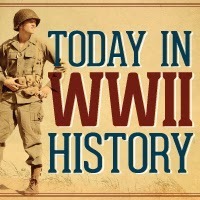Sarah Sundin's Blog, page 403
December 18, 2013
Today in World War II History
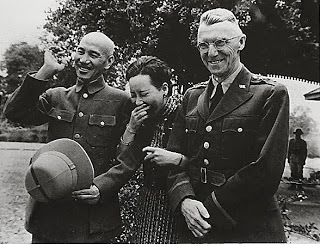 Gen. and Madame Chiang Kai-shek and Gen. Joseph Stilwell,
Gen. and Madame Chiang Kai-shek and Gen. Joseph Stilwell,April 1942 (US National Archives)70 Years Ago—Dec. 18, 1943: Chiang Kai-shek gives US Gen. Joseph Stilwell full command of Chinese troops in India & Burma. New song in Top Ten: “I’ll Be Home for Christmas.”
Published on December 18, 2013 01:00
December 17, 2013
Today in World War II History
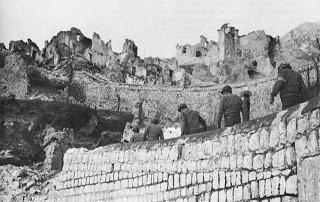 US Army medics entering San Pietro, Italy
US Army medics entering San Pietro, Italy(US Army Center for Military History)70 Years Ago—Dec. 17, 1943: US Fifth Army takes San Pietro, Italy, after Germans retreat. Wings first awarded to WASPs (Women’s Airforce Service Pilots).
Published on December 17, 2013 01:00
December 16, 2013
Christmas in World War II - The Home Front
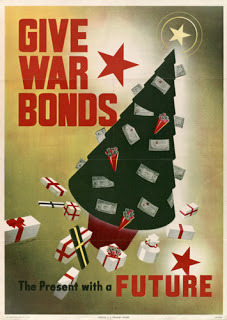 Although World War II did not take a holiday, Americans at home and abroad did their best to celebrate Christmas. Wartime separations and deprivations made festivities poignant and bittersweet. Last week’s post looked at Christmas for American servicemen and women, and this week’s looks at Christmas on the Home Front.
Although World War II did not take a holiday, Americans at home and abroad did their best to celebrate Christmas. Wartime separations and deprivations made festivities poignant and bittersweet. Last week’s post looked at Christmas for American servicemen and women, and this week’s looks at Christmas on the Home Front.Families on the Home Front dealt with painful separations as sons and daughters, husbands and fathers were away from home in the service. The holiday season highlighted this pain. Those left at home wanted to make Christmas festive, especially for the children.
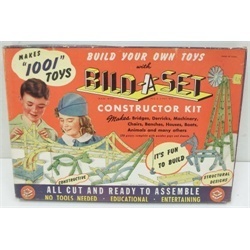 Gift giving presented unique challenges during World War II. While wartime income was high, few products were available on the shelves. Many consumer items weren’t manufactured due to shortages of raw materials and conversions of factories for military use. Clothing wasn’t rationed in the United States, but restrictions did apply and people were encouraged to make do with less. By 1944, a severe paper shortage even reduced the supply of books.
Gift giving presented unique challenges during World War II. While wartime income was high, few products were available on the shelves. Many consumer items weren’t manufactured due to shortages of raw materials and conversions of factories for military use. Clothing wasn’t rationed in the United States, but restrictions did apply and people were encouraged to make do with less. By 1944, a severe paper shortage even reduced the supply of books.Hardest of all were the scarcities of toys for the children. Toys with metal or rubber parts weren’t available. Manufacturers switched to wood and cardboard and to the new plastics that were coming out. Popular wartime toys included dolls, wooden jeeps and airplanes, and “Bild-A-Sets,” which allowed children to construct cardboard play-sets, often with military themes.
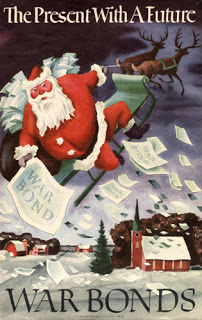 The US government provided a solution to the gift dilemma and encouraged the purchase of war bonds for Christmas presents.
The US government provided a solution to the gift dilemma and encouraged the purchase of war bonds for Christmas presents.Christmas dinners weren’t quite as elaborate as before the war. Rationing of sugar and butter meant fewer sweets. Meat, including ham, was rationed. Although turkey wasn’t rationed, the armed services worked hard to provide turkey dinners to the servicemen overseas, which meant fewer turkeys on the Home Front.
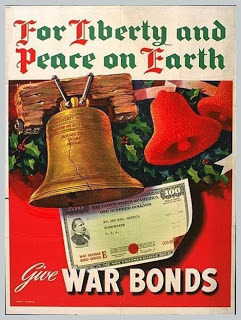 The holiday tradition of traveling to visit family and friends had to be curtailed during the war. Gasoline was rationed, and civilians were discouraged from train travel to free the rail system for movement of troops and supplies.
The holiday tradition of traveling to visit family and friends had to be curtailed during the war. Gasoline was rationed, and civilians were discouraged from train travel to free the rail system for movement of troops and supplies.
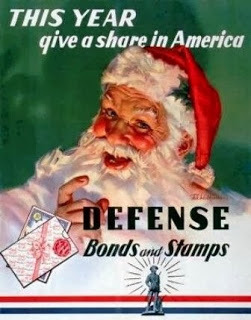 Outdoor Christmas lights were one of the first wartime casualties. In Antioch, California, for example, outdoor Christmas lights were turned off on December 11, 1941, and the tradition of lighting the community Christmas tree was postponed for the duration. Blackout conditions on the coasts, and later a nationwide dim-out to conserve fuel meant Christmas might be merry—but not quite as bright.
Outdoor Christmas lights were one of the first wartime casualties. In Antioch, California, for example, outdoor Christmas lights were turned off on December 11, 1941, and the tradition of lighting the community Christmas tree was postponed for the duration. Blackout conditions on the coasts, and later a nationwide dim-out to conserve fuel meant Christmas might be merry—but not quite as bright.Christmas in World War II left a lasting musical legacy. Bing Crosby’s recording of “White Christmas” topped the charts in December 1942, and has since sold over 50 million copies, making it one of the biggest hits of all time. “I’ll Be Home for Christmas” was the hit for Christmas 1943, and Judy Garland’s “Have Yourself a Merry Little Christmas” was in the Top Ten in 1944. These songs share a soft melancholy, a nostalgia for home, a wistfulness for tradition, and an optimistic hope for the future that resonated in wartime and still resonates today.
Some more fun facts about Christmas on the Home Front, including Christmas trees and ornaments can be found on the National WWII Museum Blog.
Celebrating Christmas in World War II required ingenuity and flexibility, but Americans at home and abroad set aside their troubles to commemorate Christ’s birth.
Published on December 16, 2013 02:00
Today in World War II History
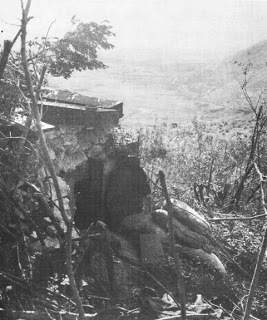 German pillbox on Monte Lungo
German pillbox on Monte Lungo(US Army Center for Military History)70 Years Ago—Dec. 16, 1943: US Fifth Army takes Monte Lungo in Italy, almost encircling San Pietro, but third attack on San Pietro fails.
Published on December 16, 2013 01:00
December 15, 2013
Today in World War II History
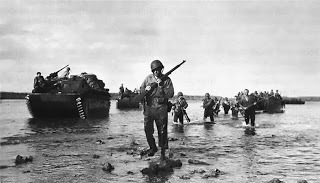 US Army troops landing at Arawe, New Britain,
US Army troops landing at Arawe, New Britain,15 December 194370 Years Ago—Dec. 15, 1943: US Army lands at Arawe, New Britain in Bismarck Archipelago. US Navy approves commissioning first black officers (22 men); 36 commissioned black officers by end of war.
Published on December 15, 2013 01:00
December 14, 2013
Today in World War II History
Published on December 14, 2013 01:00
December 13, 2013
The Advent Wreath - While Shepherds Watched...
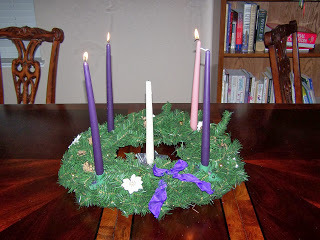 One of my family's favorite Christmas traditions is the Advent wreath. On each of the four Sundays in Advent (the four weeks before Christmas), our family gathers around the wreath with cookies and eggnog and hot chocolate. Not only is this cozy family time, but it focuses us with joyful anticipation on the birth of Jesus.
One of my family's favorite Christmas traditions is the Advent wreath. On each of the four Sundays in Advent (the four weeks before Christmas), our family gathers around the wreath with cookies and eggnog and hot chocolate. Not only is this cozy family time, but it focuses us with joyful anticipation on the birth of Jesus.This Sunday, December 15, is the third Sunday in Advent, but it's never too late to participate. If you'd like to join the Sundin family in this tradition, here are some family friendly, kid-tested ideas. Adjust these to the ages of any children present to create a meaningful time for your family.
Advent Week Three - The Shepherds' Candle
Candles:
Light two purple candles (the Prophets' Candle and the Bethlehem Candle), and the pink candle (the Shepherd's Candle). The pink symbolizes joy. Traditionally, the mother lights the candles.
Story:
Explain how the shepherds watched their flocks, heard the news that the Messiah had born, and went to see the Baby Jesus in the manger - and how they reacted with great joy.
Scriptures:
Isaiah 9:6-7 (Isaiah's prophecy of how the Messiah would be born as a child, of David's line, the Mighty God)
Luke 2:8-20 (how the shepherds heard the news and visited Jesus)
John 10:1-18 (Jesus as the Good Shepherd)
Philippians 2:1-11 (Jesus' attitude of humility, shedding his majesty to come to earth as a baby)
Songs:
"The First Noel"
"While Shepherds Watched Their Flocks by Night"
"Joy to the World"
How can your family celebrate the joy of Jesus this Christmas?
Published on December 13, 2013 02:00
Today in World War II History
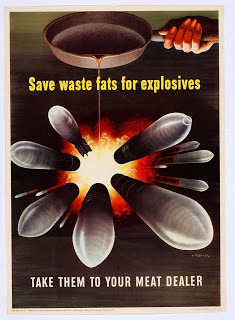 70 Years Ago—Dec. 13, 1943: In US, an extra two red ration points (used for meat/cheese/fats) awarded for each pound of used cooking fats turned in.
70 Years Ago—Dec. 13, 1943: In US, an extra two red ration points (used for meat/cheese/fats) awarded for each pound of used cooking fats turned in.
Published on December 13, 2013 01:00
December 12, 2013
Today in World War II History
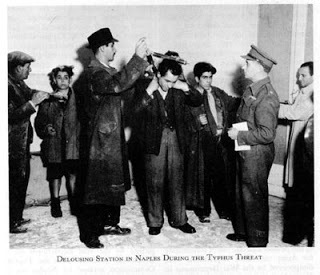 Delousing Station in Naples during the Typhus Epidemic
Delousing Station in Naples during the Typhus Epidemic(US Army Office of Medical History)
70 Years Ago—Dec. 12, 1943: Field Marshal Erwin Rommel named commander of German Army Group B in France. In Naples, US Army begins “spot” and “contact” delousing to deal with typhus epidemic among civilians.
Published on December 12, 2013 01:00
December 11, 2013
Today in World War II History
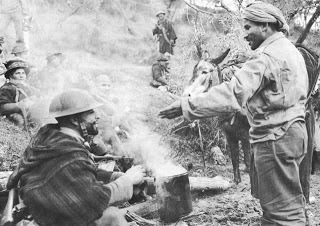 Moroccan infantry troops in Italy, late 1943
Moroccan infantry troops in Italy, late 1943(US Army Center for Military History)70 Years Ago—Dec. 11, 1943: Moroccan troops successful in first combat against Germans in Italy. Field Marshal Kesselring permits German troops to occupy Monte Cassino in Italy, excluding the abbey itself.
Published on December 11, 2013 01:00

